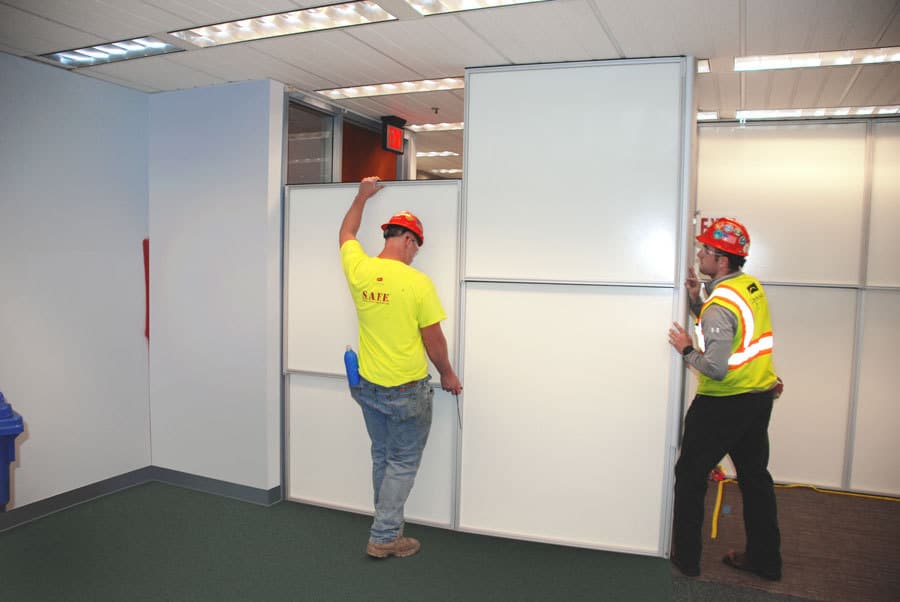
Controlling dust generated on worksites is important for the well-being of employee health and productivity. Erecting a construction dust barrier or providing respiratory protective equipment (RPE) can aid in controlling dust and help to reduce the health risks associated with inhaling construction dust. Whether building from the ground up or renovation projects or constructing a new wing or addition, dust will be a factor in the construction. General contractors, project managers, supervisors, facility managers, site managers, foremen, and workers should all be invested in the containment of construction dust. Such dust can present many unwanted health-related issues for workers, staff, visitors and, within healthcare facilities, it can be especially problematic for the health of patients.
How Dangerous is Construction Dust?
Dust generated on construction sites differs from that of normal household dust because it has a far greater likelihood to detrimentally affect the health of anyone exposed to it. Concrete dust, or the fine silica dust within it, once airborne, can potentially be toxic. Silica dust exposure can lead to respiratory problems such as silicosis and ultimately may lead to lung cancer. Wood dust is another problem. Sanding, grinding or sawing with lumber often treated with chemicals can also lead to health issues such as allergic reactions and respiratory ailments. Plastic, fiberglass, and metal dust are also common on worksites and contribute to respiratory problems. Any grinding, sanding or drilling of these materials can lead to throat and lung irritation, and metal dust from alloys containing lead, cobalt or nickel can be extremely toxic.
Dust can easily mix with airborne mold spores released from interior walls during demolition, too, leading to respiratory ailments such as throat irritation, coughing or wheezing, eye irritation, and skin irritation. For those who have compromised immune systems or chronic lung problems, there is even a great risk for bacterial respiratory infections to develop, such as aspergillosis.
Contain Dust During Construction or Renovation
Though it may be near impossible to completely eliminate dust on worksites, strategies to contain it should be in place where and when dust is generated. Three proven methods of keeping dust down in construction include vacuuming, ventilation and erecting a construction dust barrier.
- Vacuuming and general mechanical ventilation can help remove dusty air from interior spaces during renovation or remodeling. Ventilation systems can also pull in clean air to the work area and aid in preventing dust from circulating from room to room.
- Though commercial vacuuming can be effective, on-tool extraction is a local exhaust ventilation (LEV) system that removes dust as it’s produced. Tools can be outfitted to capture and extract dust and remove it from a room or building through tubing during such operations as sanding or grinding.
- Modular construction dust barriers are vital to containing dust during renovation and remodeling. STARC Systems’ two premier temporary containment solutions, RealWall™ and LiteBarrier™, are effective construction dust barriers that segregate dust caused by renovation, remodeling, and construction projects. For healthcare facility renovations, the airtight containment systems can exceed ICRA Class IV requirements. RealWall™ and LiteBarrier™ not only effectively limit dust to the work area, but eliminate the general disruption renovation brings to a hospital, healthcare facility, or commercial setting. STARC’s construction dust barriers are perfect for keeping dust down to a minimum for any commercial, or healthcare-related work area.
Dust is a hazard of the construction industry. It is not only a nuisance but a potential health risk. During renovation, keeping construction dust down and implementing dust control measures during construction projects should be a priority. Contractors and project managers can help improve productivity and ensure the health of their workers by implementing appropriate dust containment strategies. Construction dust barriers are one such method that can aid in reducing dust in the workplace.
